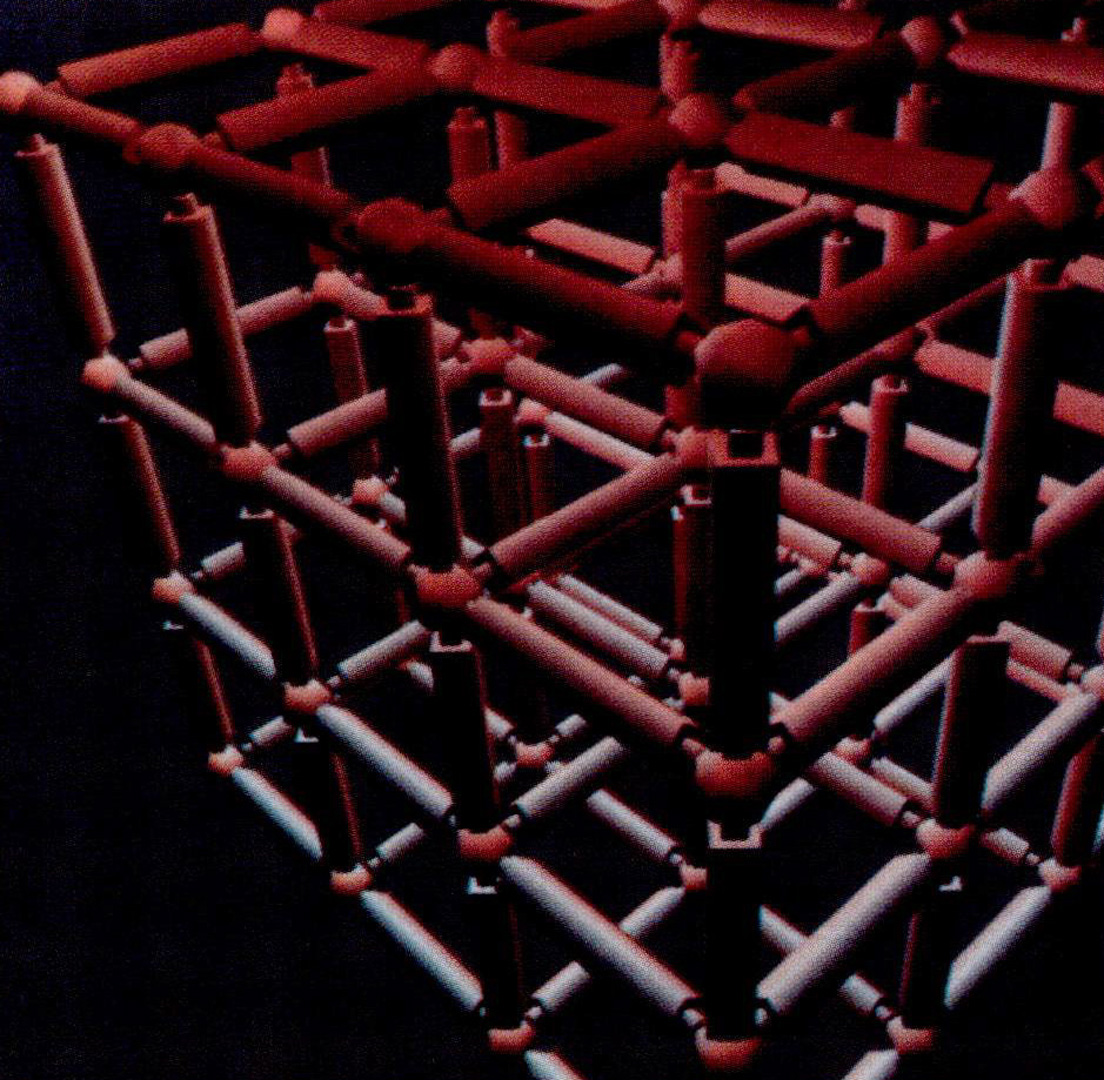“FRAMES: Software tools for modeling, rendering and animation of 3D scenes” by Potmesil and Hoffert
Conference:
Type(s):
Title:
- FRAMES: Software tools for modeling, rendering and animation of 3D scenes
Presenter(s)/Author(s):
Abstract:
FRAMES is a set of flexible software tools, developed for the UNIX programming environment, that can be used to generate images and animation of 3D scenes. In FRAMES, each stage of the image-rendering pipeline is assigned to a UNIX System filter. The following is a typical FRAMES pipe sequence where each filter performs a task implied by its name:cat scene.frm|euclid|mover|shade|camera|abufFRAMES was designed to be easy to use, to permit flexible experimentation with new ideas in image rendering and geometric modeling, to allow distribution of different parts of the rendering pipeline to different processors, and to specify images in a common format for display on a variety of devices.The user communicates with FRAMES via a command language. This language is extended whenever a software developer needs to incorporate a new idea into the system by adding new commands. Data flowing through the pipeline is modified by a collection of filter programs and passed through the pipe in text or binary format.The modular and pipe-based nature of FRAMES allows for multi/parallel processor implementations and device independence. FRAMES has generated images on a local-area network of minicomputers (each filter runs on a different processor) and on a 64-processor hypercube machine (one filter runs on 64 processors). Applications of FRAMES have ranged from reconstruction of neurons from serial sections to rendering of antialiased octree objects with subpixel detail.
References:
1. Bishop, G., and Weimer, D., “Fast Phong Shading,” ACM Computer Graphics 20, 3 (August 1986), 103-106.
2. Blinn, J., “System Aspects of Computer Image Synthesis and Computer Animation,” SIGGRAPtt 1984 Advanced Image Synthesis Course Notes (July 1984).
3. Carpenter, L., “The A-buffer, An Antialiased Hidden Surface Method,” ACM Computer Graphics 18, 3 (July 1984), 103-108.
4. Cook, R., “Shade Trees,” ACM Computer Graphics 18, 3 (July 1984), 223-231.
5. Crow, F. C., “A More Flexible Image Generation Environment,” ACM Computer Graphics 16, 3 (July 1982), 9-18.
6. DeBenedictis, E., The Bell Labs Hypercube Machine, personal communication (April 1986).
7. Duff, T., and Porter, T., “Compositing Digital Images,” ACM Computer Graphics 18, 3 (July 1984), 253-259.
8. Duff, T., “Compositing 3D Rendered Images,” ACM Computer Graphics 19, 3 (July 1985), 41-44.
9. Hoffert, E. M., and Bishop, G., “Exact and Efficient Area Sampiing Techniques for Spatial Antialiasing,” Technical Memorandum, AT&T Bell Laboratories (December 1985).
10. Hoffert, E. M., and Potmesit, M., “Generation and Display of Self-Similar and Volume-Diminishing Cubes in 3D,” accepted for presentation at Eurographies “87, Amsterdam, Holland (August 1987).
11. Kernighan, B., and Pike, R., The UNIX Programming Environment, Englewood Cliffs, N J: Prentice Hall, 1984.
12. Pike, R., “Graphics in Overlapping Bitmap Layers, * ACM Transactions on Graphics 2, 2 (April 1983), 135-160.
13. Potmesii, M., “A Parallel Z-Buffer Implementation on a 64- Processor Hypercube Machine,” Technical Memorandum, AT&T Bell Laboratories, {in preparation}.
14. Reynolds, C. W., “Computer Animation with Scripts and Actors,” ACM Computer Graphics 16, 3 (July 1982), 289-296.
15. Selfridge, P., “Using a Simple Shape Measftre to Improve Automatic 3D Reconstruction,” Pattern Recognition Letters 5, 5 (May 1987).
16. Sequin, C., et. al., “More .. Creative Geometric Modeling,” Technical Report UCB/CSD 86/278, Berkeley, University of California (December 1985).
17. Sequin, C., “The Berkeley UNIGRAFIX Tools, Version 2.5,” Technical Report UCB/CSD 86/281, Berkeley, University of California (December 1985).
18. Whitted, T., and Weimer, D., “A Software Testbed for the Development of 3D Raster Graphics Systems,” ACM Transactions on Graphics l, 1 (January 1982), 43-77.
19. Zimmer, C., “A Portable 5620 Terminal with a Hand Held Viewer,” Technical Memorandum, AT&T Bell Laboratories (October 1985).





